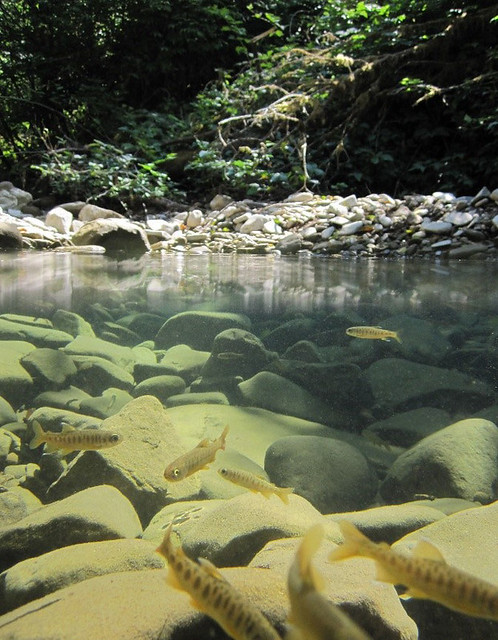Jan 27, 2021

For decades, federal, state, and nonprofit organizations have focused on restoring habitat for the iconic Northwestern coho salmon, a species listed as threatened under the Endangered Species Act.
However, much of that restoration did not directly consider the importance of connected seasonal freshwater habitats for the migratory salmon.
Since the middle of the 20th century, most salmon populations have been in decline, owing mostly to man-made pressures like commercial overfishing and habitat loss. Natural phenomena like El Niño and La Nina can affect precipitation and ocean temperatures and play a role in fish population sizes as well. Together, naturally produced populations today are only a fraction of what was seen in the waters of the Northwest a century ago.
Rebecca Flitcroft, a research fish biologist with the Pacific Northwest Research Station, recently found that considering where seasonal habitat is found is a key factor to successful restoration.
Coho salmon require different seasonal habitats for adult spawning, rearing juveniles in the summer and sheltering juveniles over the winter. Juvenile coho salmon spend the first year of their lives in rivers and streams along the Oregon coast before migrating to the ocean where they can live up to three years. These habitats must be connected so young fish can move between them. After their time spent in the ocean, the adult salmon return to freshwater to spawn and die.
Flitcroft found that coho salmon tend to occupy seasonal habitats within 500 meters of each other. This allows the alevin—or newly spawned salmon—to easily move to deep pools for summer and then to slow-water areas in winter for protection from high-flows created by winter storms. She also said that, given the choice between ideal habitat and connectivity, coho salmon will sacrifice deeper waters or slower flows for closer, more connected habitats.

“To survive, coho salmon need a connected habitat network that meets the needs of each life stage,” said Flitcroft. “In fact, the connection among different instream habitats is a bigger factor of long-term population health than the quality of individual habitats alone.”
Satellite images also revealed that ancient, slow-moving landslides, called deep-seated landslides, alter stream inclines and deliver material that help develop these closely connected seasonal habitats. These discoveries support how this new understanding of connected habitats can help inform partner efforts as they plan restoration projects.
To work, land managers across public and private lands need to reassess how they protect river corridors by targeting deep-seated landslides for restoration along with other connected habitat neighborhoods preferred by salmon across life stages. Part of that protection is allowing salmon to move through various land ownerships.
“Right now, fish are swimming through a checkerboard of different land ownerships,” Flitcroft said. “To ensure lasting success, restoration strategies should not only take into consideration the reality of seasonal habitats, but also be holistic in their approach.”
This information originally appeared in Science Findings, a publication of the Pacific Northwest Research Station.
You May Also Like
Write a Response
"in" - Google News
January 28, 2021 at 12:39AM
https://ift.tt/3qWMiyJ
Coho Salmon Thrive in More Established 'Neighborhoods' - USDA.gov
"in" - Google News
https://ift.tt/2MLa3Y1
https://ift.tt/2YrnuUx
Bagikan Berita Ini














0 Response to "Coho Salmon Thrive in More Established 'Neighborhoods' - USDA.gov"
Post a Comment